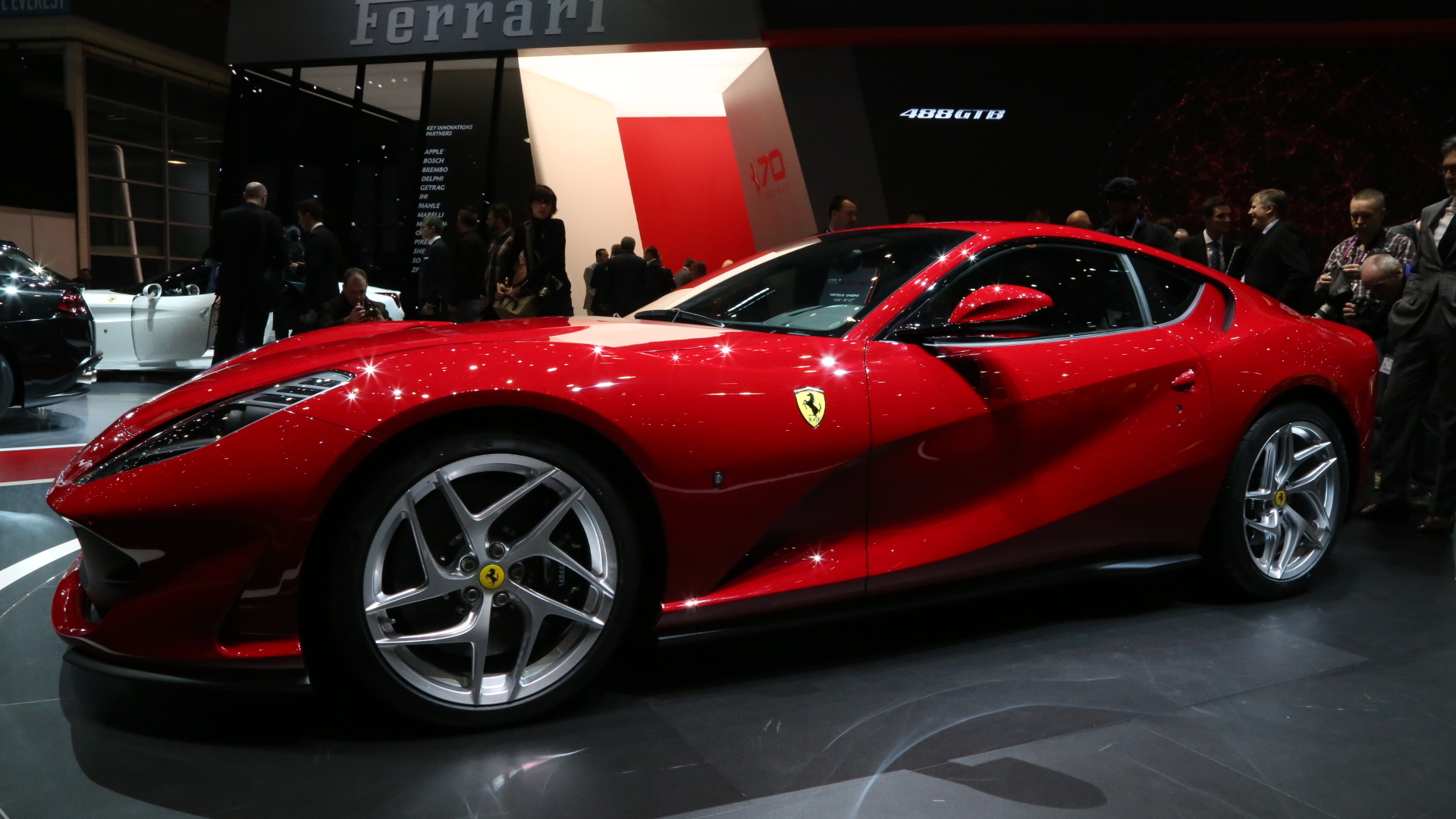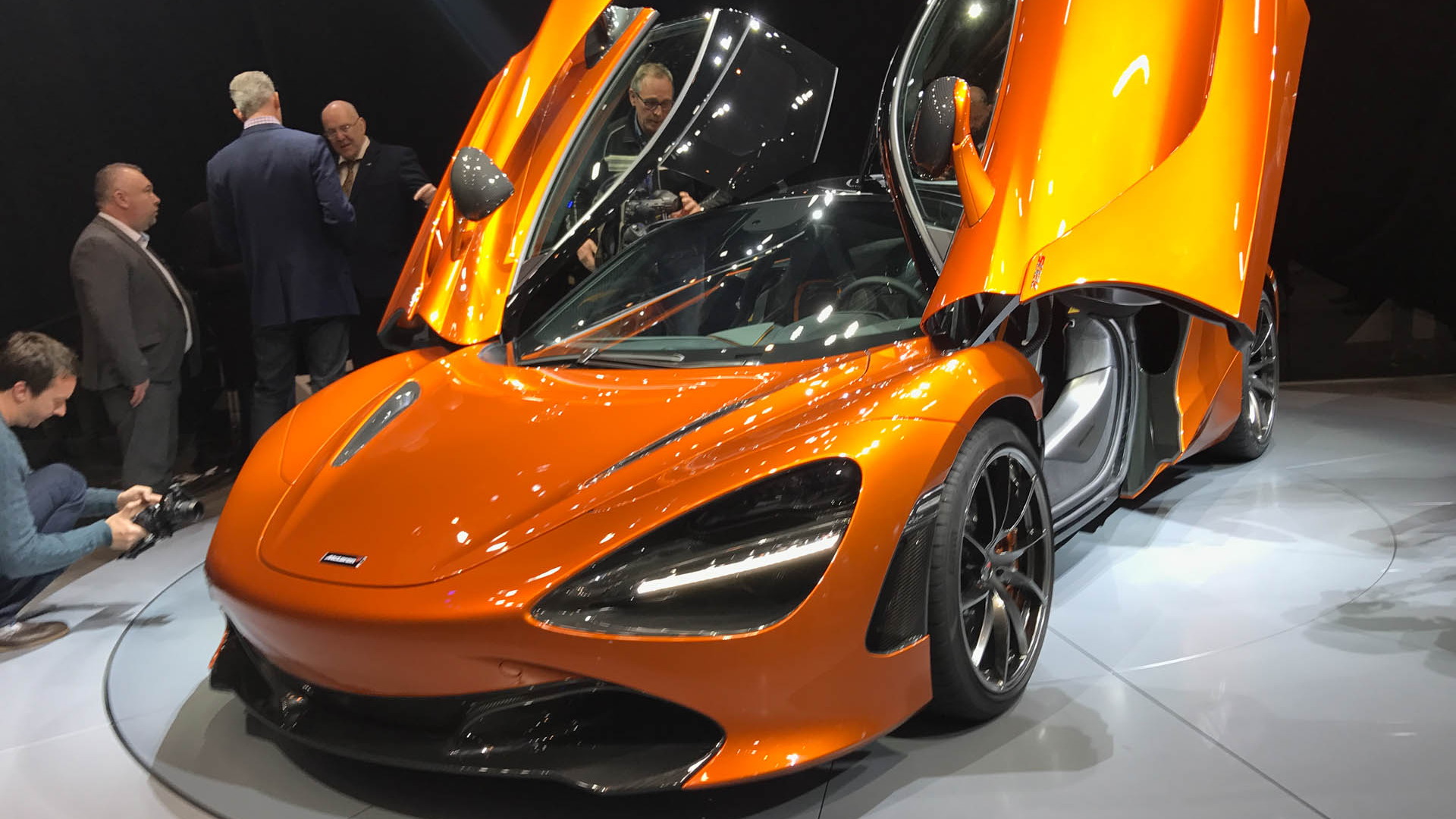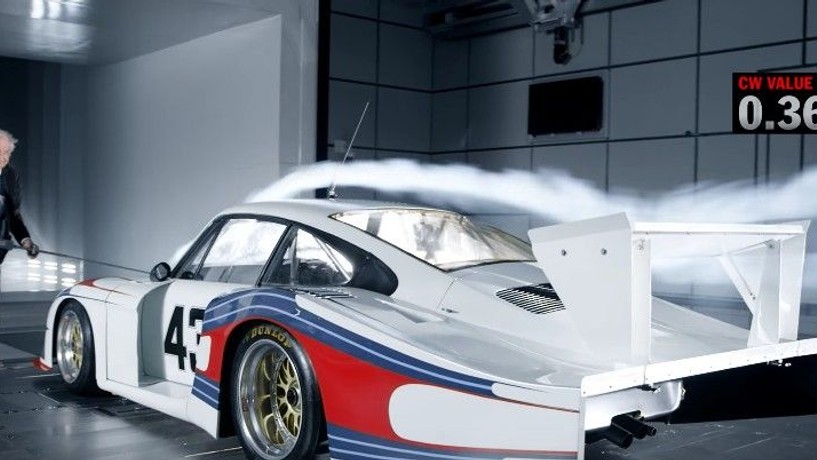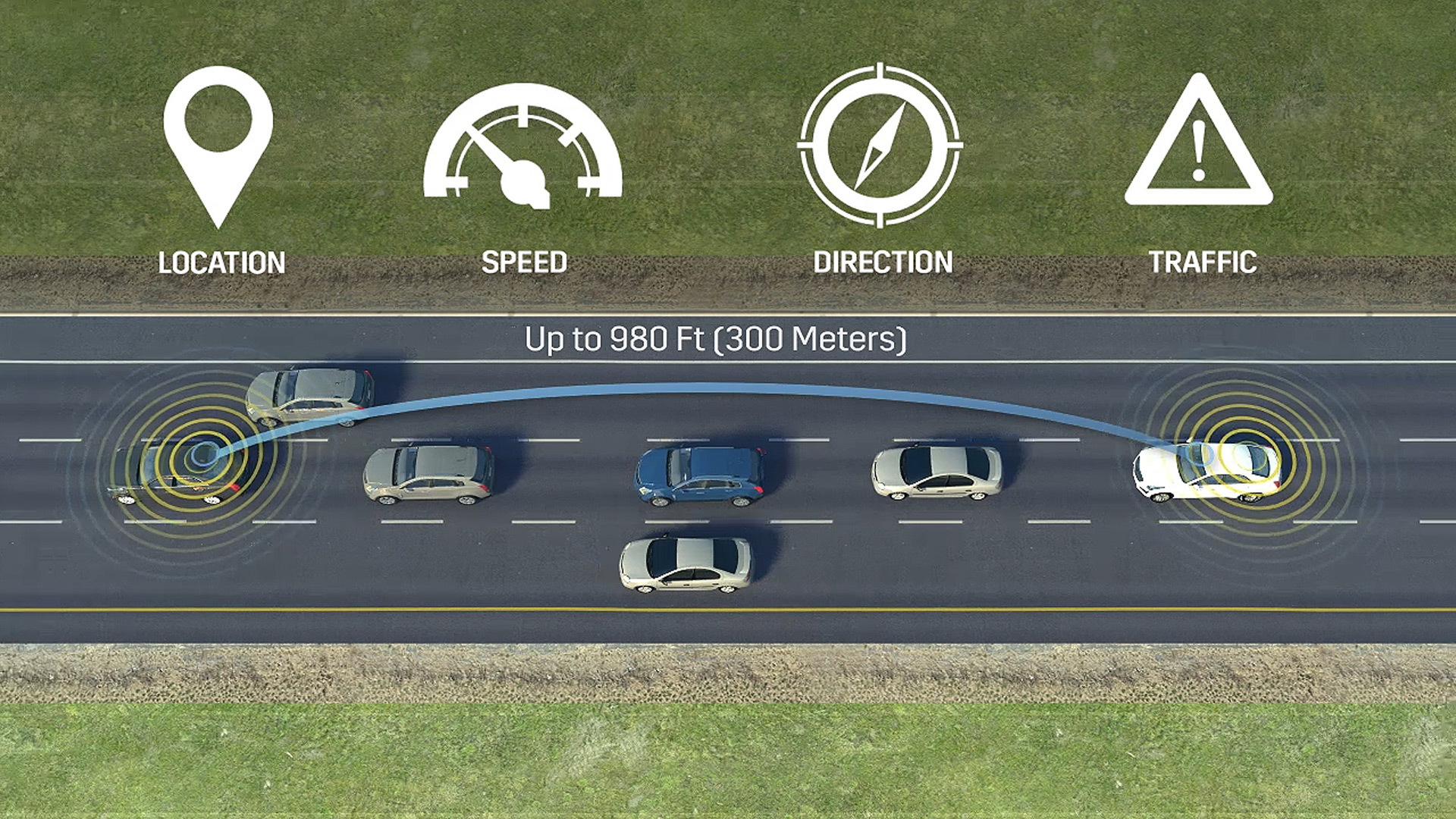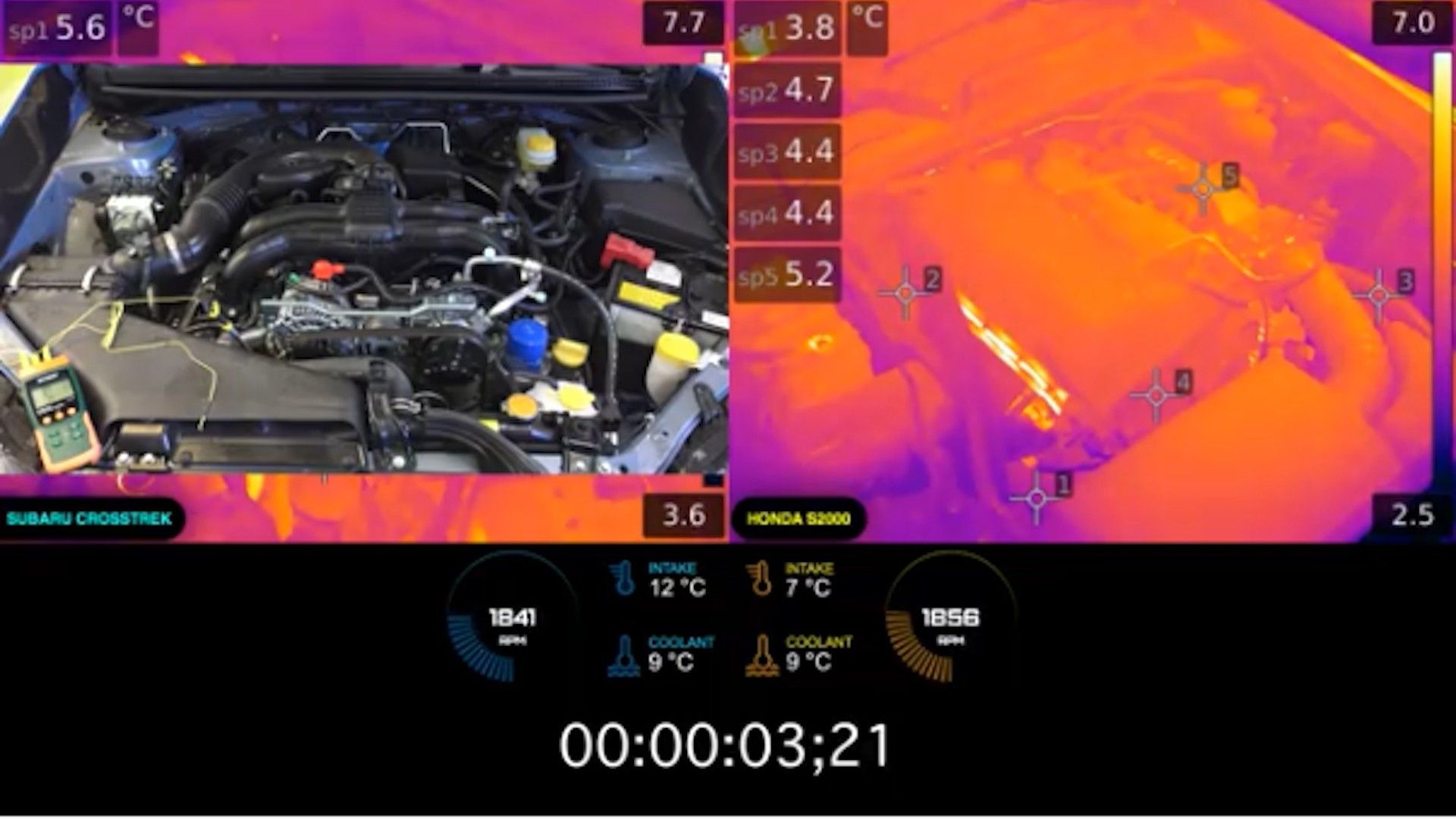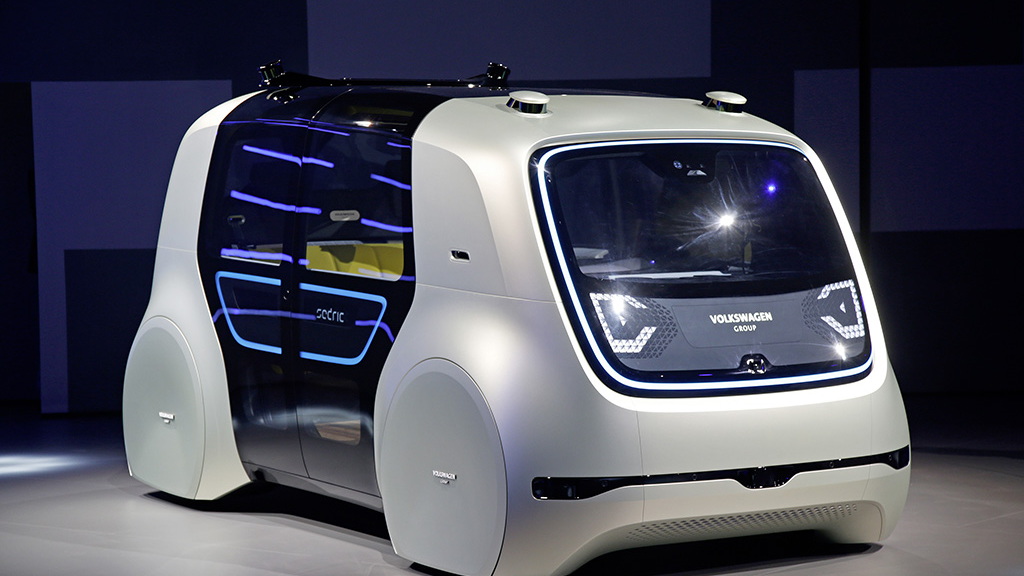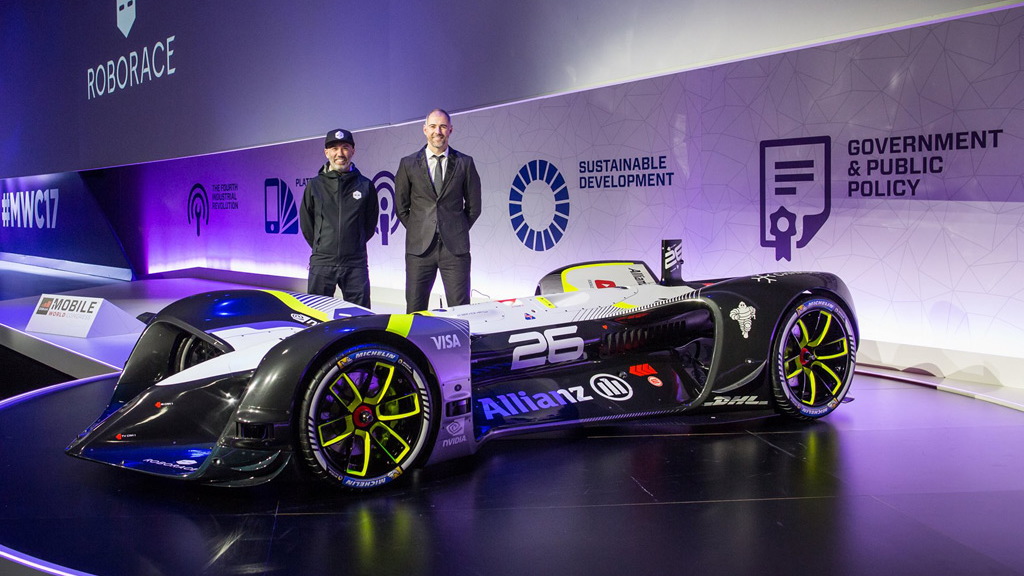Car Tech
-

When the Koenigsegg Regera made its debut a little over two years ago, news that the hypercar would arrive without a transmission was a shock to many. No gears, no CVT, nothing. Thankfully, Jason Fenske of Engineering Explained is here to help us figure out how the Regera can move at all, let alone approach 250 mph, without a transmission. So, with only one gear ratio at the vehicle’s disposal, Jason proves through the power of math that it is indeed possible to spin the wheels with what Koenigsegg calls “Direct Drive.” A hydraulic coupling links the 5.0-liter V-8 engine to...
-
 Watch how Bugatti abuses its cars to ensure they handle big power and tough tracks
Watch how Bugatti abuses its cars to ensure they handle big power and tough tracksIt’s common knowledge Bugatti goes above and beyond to produce its extraordinary hypercars, but new video proves the boutique automaker certainly does its due diligence when engineering a vehicle for the most extreme performance conditions. Video snippets posted to Twitter from James Mill of...
Sean Szymkowski -
 Thermal camera shows how hot brake rotors get during use
Thermal camera shows how hot brake rotors get during useIt’s common knowledge brakes heat up during use, but how hot can they get? Simply put, pretty darn hot. Jason Fenske from Engineering Explained is back with another intriguing video made with help from a $55,000 FLIR thermal camera. This time, he points the camera at the brakes and takes some...
Sean Szymkowski -
 Ford and Magna team up on prototype carbon fiber subframe
Ford and Magna team up on prototype carbon fiber subframeCarbon fiber is becoming more commonplace than ever, and in the name of weight savings, the material may be making its way into more and more components in more and more common cars. One of those components is future Ford subframes. A collaborative effort between Ford and the automotive supplier...
Sean Szymkowski -
 Koenigsegg founder can track every customer vehicle from his phone
Koenigsegg founder can track every customer vehicle from his phoneChristian von Koenigsegg had big dreams when he first began conjuring thoughts of building exclusive sports cars back in 1994. Those dreams not only included incredible performance but advanced technologies to ensure an exclusive experience available to only a handful. It seems Koenigsegg has met...
Sean Szymkowski -
 Five racing technologies that have filtered down into Porsche road cars
Five racing technologies that have filtered down into Porsche road carsPorsche loves its motorsports. That's actually an understatement, as Porsche is devoted to motorsports in an incredibly passionate way. It's a good thing for Porsche customers, too, because a lot of racing-derived technology often works its way into the road cars. According to Porsche, here are the...
Jeff Glucker -

For some, driving at night can be a daunting task. At times, it might even be downright terrifying. Lots of danger lurks in places where the lights don't shine as brightly. Plenty of you are reading this and scoffing at the idea of being afraid of driving when it's dark out. You shouldn't because a fair amount of the populace truly doesn't enjoy driving when the sun has gone to bed. Also, think of just how poorly a lot of folks drive during the daytime and remember that it all ramps up at night. Ford is working to help alleviate the fears associated with nighttime driving. The automaker has...
-
 The benefits of Individual Throttle Bodies vs. a single throttle body
The benefits of Individual Throttle Bodies vs. a single throttle bodyYour average new car has a throttle body and an intake manifold. The engine sucks in air through the air filter before it passes through the open throttle body and into the manifold. From there, it moves into the cylinders as called upon during the combustion cycle. You'll find one throttle body...
Jeff Glucker -
 Ferrari 812 Superfast says what it does, does what it says
Ferrari 812 Superfast says what it does, does what it saysNow that we've had an up close look at the replacement for the F12 Berlinetta, Ferrari has clued us into the details on the 812 Superfast that we saw for the first time during last week's 2017 Geneva auto show. We already know that the car features a new 6.5-liter V-12 underhood that makes about...
Aaron Cole -
 Intel to buy Mobileye in $15.3B deal
Intel to buy Mobileye in $15.3B dealIntel on Monday agreed to pay $15.3 billion to Mobileye, a leading supplier of driver assistance and self-driving technology. Mobileye’s claim to fame is its EyeQ technology which uses proprietary image recognition software to help self-driving cars see the world, and the company is already a...
Viknesh Vijayenthiran -
 How the aerodynamics of the 1969 Dodge Charger Daytona compare to a modern Charger Hellcat
How the aerodynamics of the 1969 Dodge Charger Daytona compare to a modern Charger HellcatIn the late 1960s, Dodge wanted to go fast and win races. Its Charger 500 wasn't cutting it in the NASCAR field, though, so the automaker needed to make a change. You might think some light body changes would do the trick, but you'd be wrong. To turn the Charger into a slippery 200-mph machine...
Jeff Glucker -
 See how hot a burnout gets through a thermal camera
See how hot a burnout gets through a thermal cameraWhat's the best way to end the life of a set of tires? If you have the mind of a fully grown child, a good burnout is the way to go. We all know that you're going to heat up the brakes and tires when you're playing these foolish games. But do you know just how much heat you're creating? Jason...
Jeff Glucker -

McLaren isn't letting its Super Series cars go stale. At the Geneva auto show, the British brand revealed its replacement for the brilliant 650S, the 720S, and it's wild. Crafted from carbon fiber, aluminum, and a smidge of pixie dust, the new 720S is hard to take in all at once. It has intricate details that need some finer study. And study we did. We were in Geneva and we crawled around, inside, and all over the new 720S, looking at every detail, curve, and intake. Then we sat down with Rob Melville, chief designer at McLaren, and went through each and every air inlet on the new 720S. On...
-
 Porsche shares 5 of its most iconic rear spoilers
Porsche shares 5 of its most iconic rear spoilersPorsche has been on a bit of a Top 5 kick as of late. We're not complaining, though, because it's always fun to list off an automaker's greatest hits, especially when those hits are of this caliber. Today, Porsche is taking a look at what it believes to be the cars wearing the five wildest rear...
Jeff Glucker -
 Cadillac announces V2V communications, just as CIA hacking allegations emerge
Cadillac announces V2V communications, just as CIA hacking allegations emergeVehicle-to-vehicle (V2V) communications, along with vehicle vehicle-to-infrastructure (V2I) communications, is seen as a key stepping stone towards the safe deployment of fully self-driving cars. But while regulators slowly climb onboard with the establishment of rules and common standards for car...
Viknesh Vijayenthiran -
 Watch engines warming up as captured by $55K thermal imaging camera
Watch engines warming up as captured by $55K thermal imaging cameraIf you have a newer car, your engine warms up pretty quickly. Driving something a bit more classically cool? That engine will stay cooler for longer as well, since it needs a bit more time to get up to operating temperature. But aren't you curious what an engine would look like if you could watch...
Jeff Glucker -
 Nissan has crafted a formula to calculate 'Camelpower'
Nissan has crafted a formula to calculate 'Camelpower'Do you know the origins of horsepower? I'm not talking about the history of cars possessing lots of it, but rather where the term itself comes from and how it was derived. Turns out, the term actually goes back to the power generated by a horse. More specifically, it compares the power of a draft...
Jeff Glucker -
 Sedric concept is VW Group’s first concept, first Level 5 self-driving car
Sedric concept is VW Group’s first concept, first Level 5 self-driving carThe Volkswagen Group avoided its usual pomp and flair in the lead up to this year’s Geneva auto show by focusing on a single, community-minded concept car meant to be representative of future trends affecting its entire portfolio of brands. The concept is called the Sedric, and it’s the...
Viknesh Vijayenthiran -

The Bugatti Chiron is just getting out to the extremely well-heeled public. Customers have started taking deliveries of the 1,480-horsepower ballistic road machine, and we're curious if any of them will ever find the room to explore the car's rumored 288-mph top speed. Jason Fenske from Engineering Explained has a few questions, too, but his are related to the fact that no production car has ever hit the seemingly unreachable 300-mph mark. With Jason, however, if you get a question you also get an answer. In today's video, Jason breaks it all down for us using science and math. The specific...
-
 This is how you tear down a Tesla battery pack
This is how you tear down a Tesla battery packWhen a Tesla is in an accident, it has a battery pack that's built to survive that crash as well as it possibly can. Those battery packs are then sent off to a recycler. They can be scrapped and used to create the components needed for new batteries, or they can be sold. That's what we have in the...
Jeff Glucker -
 How much air will an engine consume at wide open throttle?
How much air will an engine consume at wide open throttle?The headline to this article is clearly the type of question that keeps Engineering Explained host Jason Fenske up at night. Luckily for him, he's got the math and science skills to figure it all out. Fenske wanted to explain air intake for a given engine to the rest of us, and thus visual aids...
Jeff Glucker -
 McLaren has no need for your antiquated sway bars
McLaren has no need for your antiquated sway barsMcLaren is a company that loves pushing the technological envelope. Be it the company's road cars or its racing machines, there is plenty of fascinating bits to be explored under the skin. One area that's proven to be rather interesting is in regards to the suspension employed on a number of modern...
Jeff Glucker -
 Self-driving race cars edge closer to reality with Robocar unveiling
Self-driving race cars edge closer to reality with Robocar unveilingSelf-driving race cars may be anathema to genuine race fans, but there’s no doubt the phenomenon has the potential to further hone the technology for road cars, which after all is one of the enduring legacies of motorsport. A company by the name of Roborace is working on the world’s...
Viknesh Vijayenthiran -
 New Volvo XC60 to automatically steer out of trouble
New Volvo XC60 to automatically steer out of troubleThe latest version of the Volvo City Safety collision avoidance system will be able to automatically steer a car of trouble, within the given road rules. It will debut on the redesigned Volvo XC60 due to be unveiled at next week’s 2017 Geneva auto show, and will make its way into other...
Viknesh Vijayenthiran








